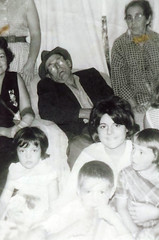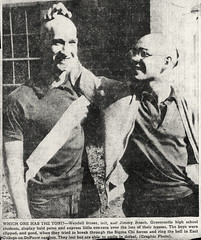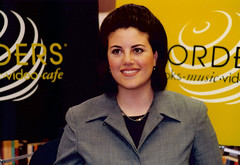Erratum

It seems that this Friday isn't May 3rd, but May 2nd.
So, Tea that day will be commemorating Dos de Mayo, instead of Tres de Mayo or Cinco de Mayo. HSI Apologies for any confusion.
Luckily, there is some artwork for that day, too.
For me to know, and you to find out.


PARIS — Albert Hofmann, the mystical Swiss chemist who gave the world LSD, the most powerful psychotropic substance known, died Tuesday at his hilltop home near Basel, Switzerland. He was 102.
The cause was a heart attack, said Rick Doblin, founder and president of the Multidisciplinary Association for Psychedelic Studies, a California-based group that in 2005 republished Dr. Hofmann’s 1979 book “LSD: My Problem Child.”
Dr. Hofmann first synthesized the compound lysergic acid diethylamide in 1938 but did not discover its psychopharmacological effects until five years later, when he accidentally ingested the substance that became known to the 1960s counterculture as acid.
He then took LSD hundreds of times, but regarded it as a powerful and potentially dangerous psychotropic drug that demanded respect. More important to him than the pleasures of the psychedelic experience was the drug’s value as a revelatory aid for contemplating and understanding what he saw as humanity’s oneness with nature. That perception, of union, which came to Dr. Hofmann as almost a religious epiphany while still a child, directed much of his personal and professional life.
2 egg whites
1 oz mixture of 3 parts baking soda, 2 parts water.
2 fresh cherries
1 tsp red wine
1 tsp sugar.
First of all, you'll want to get some good, expensive red wine. The cheap stuff works, but your trips will be crappier and you'll get some nausea.
Ok, now that you have your stuff, put the Egg whites and cherries in a large bowl. Start stirring until you get a pinkish mass. Now, Pour in your mixture of baking soda. As you do this you will notice heat building and a small amount of smoke being let off- this is normal. Wait about 10 minutes to cool. Then Pour in the red wine. Immediately after you do this, steam will gather and after a few seconds you will be left with A clear liquid at the bottom of the bowl. This is your acid.


The Third of May 1808 (or El tres de mayo de 1808 en Madrid, [etc...]) is a painting completed in 1814 by the Spanish master Francisco Goya, now in the Museo del Prado, Madrid. Along with its companion piece of the same size, The Second of May 1808 (or The Charge of the Mamelukes), it was commissioned by the provisional government of Spain at Goya's suggestion. Goya sought to commemorate Spanish resistance to Napoleon's armies during the occupation of 1808.
The painting's content, presentation, and emotional force secure its status as a groundbreaking, archetypal image of the horrors of war. Although it draws on many sources in high and popular art, The Third of May 1808 marks a clear break from convention. Diverging from the traditions of Christian art and traditional depictions of war, it has no distinct precedent, and is acknowledged as one of the first paintings of the modern era.[3] According to the art historian Kenneth Clark, The Third of May 1808 is "the first great picture which can be called revolutionary in every sense of the word, in style, in subject, and in intention".[4]
The Third of May 1808 has inspired a number of other major paintings, including a series by Édouard Manet, and Pablo Picasso's Massacre in Korea and his masterpiece Guernica.

First, ED has earned himself a good reputation with the fire department, after quenching a rapidly growing mulch fire. Good going, ED!
WL has purchased a sturdy can opener for the kitchen - so take that, can opener "borrower".
It's Orthodox Good Friday - so Sunday is Orthodox Easter. Passover must be about to end, too. (Looks like there's about 1 day left).
...and finally, it's Fonda Fondue Friday - in LESS THAN AN HOUR!
How much better could it get?

SM provides the idea for this post. Pardon us for the math...
In a group of people of size r, what is the probability that two people share the same birthday? (Discounting leap days...)
TC = Total potential combinations of unique birthdays = 365 * 364 * 363 * ... * 365-r+1.
Probability of all unique birthdays = TC / (365^^r).
Probability of not all unique birthdays = 1 - (TC/(365^^r)).
Some examples:
| # people | Prob (all unique) | Prob (not all unique) |
| ---------- | ----------------- | --------------------- |
| 1 | 1.000 | 0 |
| 10 | 0.883 | 0.117 |
| 20 | 0.5885 | 0.4115 |
| 30 | 0.293 | 0.707 |
| 40 | 0.1087 | 0.8913 |

The article we remembered was from all the way back in ought-two - not from "a couple of years ago". Here are some excerpts:
Few Risks Seen To the Children Of 1st Cousins
New York Times, By Denise Grady, April 4, 2002
Contrary to widely held beliefs and longstanding taboos in America, first cousins can have children together without a great risk of birth defects or genetic disease, scientists are reporting today. They say there is no biological reason to discourage cousins from marrying.
First cousins are somewhat more likely than unrelated parents to have a child with a serious birth defect, mental retardation or genetic disease, but their increased risk is nowhere near as large as most people think, the scientists said.
In the general population, the risk that a child will be born with a serious problem like spina bifida or cystic fibrosis is 3 percent to 4 percent; to that background risk, first cousins must add another 1.7 to 2.8 percentage points, the report said.
Although the increase represents a near doubling of the risk, the result is still not considered large enough to discourage cousins from having children, said Dr. Arno Motulsky, a professor emeritus of medicine and genome sciences at the University of Washington, and the senior author of the report.
''In terms of general risks in life it's not very high,'' Dr. Motulsky said. Even at its worst, 7 percent, he said, ''93 percent of the time, nothing is going to happen.''
The report is in today's issue of The Journal of Genetic Counseling.
[...]
Dr. Motulsky said medical geneticists had known for a long time that there was little or no harm in cousins marrying and having children. ''Somehow, this hasn't become general knowledge,'' even among doctors, he said.
Twenty-four states have laws forbidding first cousins from marrying, and seven states have limits like requiring genetic counseling. But no countries in Europe have such prohibitions, and in parts of the Middle East, Africa and Asia, marriages between cousins are considered preferable.
[...]
It is not known how many cousins marry or live together. Estimates of marriages between related people, which include first cousins and more distant ones, range from less than 0.1 percent of the general population to 1.5 percent. In the past, small studies have found much higher rates in some areas. A survey in 1942 found 18.7 percent in a small town in Kentucky and a 1980 study found 33 percent in a Mennonite community in Kansas.
[...]
Keith T., 30, said he married his cousin seven years ago and in 1998, frustrated by the lack of information for cousins who wanted to marry, he started a Web site, cousincouples.com. It is full of postings from people who say they have married their cousins or want to do so.
UPDATE: Cecil Adams weighed in on the topic in ought-four - and reminds us:
An argument can be made that marriages of first cousins descended from strong stock can produce exceptional children. Charles Darwin, for example, married his first cousin Emma, which wasn't at all unusual in their prominent and successful family--their common grandparents were cousins too. Three of Charles and Emma's ten kids died in childhood, it's true, but that was standard for Victorian England; the others went on to productive and in some cases distinguished careers.
Why are Americans and their legal system so phobic about first-cousin marriage while Europeans aren't? Ottenheimer blames several factors. First, bad research in the 19th century greatly exaggerated the dangers of imbecility, blindness, etc, among children of close kin. This research was eventually discredited in Europe, but Americans and their state legislators never got the word. Second, cousin marriage in the U.S. was considered a sign of barbarism (probable translation: hillbillies did it). In Europe, on the other hand, particularly in Mediterranean cultures, cousin marriage had a long and reasonably respectable history, although it's rare today. Finally, European deep thinkers contended that certain forms of cousin marriage increased social cohesion. No such positive arguments were advanced in the States.

Finally we learn that "midweek" is tomorrow between 9:30 and 10:00 AM.
Verizon, verily thy name is Slowsky.

On this day in 1770, Joseph Priestly discovered the Rubber Eraser.
So, today is Rubber Eraser Day. Make all the mistakes you want.

You know what's nice?
Civilization. And Manhattans.
Please join us at 4:00 to toast the end of Hate Week and the return of Civility and the Cheese Plate.
Also, AZ has liberated some Vino Aromatizzato All'Uovo from her wine cellar. It has a chicken on the label, so there's no doubt it'll be good.

Yesterday, we used SpeakEasy's Internet Speed Test to determine our connection speed. We got numbers something like: 272 kbps download, and 493 kbps upload.
Today, we repeated the test, and got the following: 262 kbps download, and 385 kbps upload.
The trend is not good. Midweek is tomorrow, right?

But we'll have to travel to Chicago to get some... Is Biotech big there?
Chicago Tribune, By Mike Hughlett, April 5
"When you're out of Schlitz, you're out of …" what? Can you remember?
If you said "beer," congratulations, you're the target market for an attempt to revive the once-ubiquitous but now nearly dead beer brand right here in Chicago, where Schlitz once reigned supreme. And yes, it is a long, long shot, beer industry experts say.
Next week, at select North Side outlets, Pabst Brewing Co., current owner of the Schlitz brand, will launch the revamped brew with an old 1960s recipe. That would be the recipe used before the old Schlitz company changed its formula in the 1970s, sending the brew on a path to near oblivion.
New Schlitz will come in traditional long-neck bottles too. Nowadays Schlitz comes only in cans, and they don't exactly fly off the shelves. About as many barrels of Schlitz beer are shipped per year as Bud Light, the leading U.S. beer, are shipped in a day.
[...]
Pabst is a virtual company, contracting out brewing and bottling to others. Its stated goal with Schlitz: Make a nostalgia play of sorts to Baby Boomers—guys in their 50s and even late 40s—who remember Schlitz as a no-nonsense beer of their youth.
"These are the guys who remember how great the brand was and what it means," said Kyle Wortham, Pabst's senior brand manager for Schlitz. "It's guys who were drinking this beer back in the day."
[...]
But what about the taste?
Well, Wortham said he hears this from people in the first two test markets: "It tastes like the first beer I stole out of my dad's refrigerator." And that, he said, is definitely a compliment.

NT - Have you tried this? It was one of the top ten designs of 2000. They must have the bugs worked out of it by now.

Whatever happened to Monica Lewinsky?
Well, that handbag business closed around 2004.
She did, however, get a Master's degree in Social Psychology from the London School of Economics back in '06.
Since then, apparently, she's been laying low.